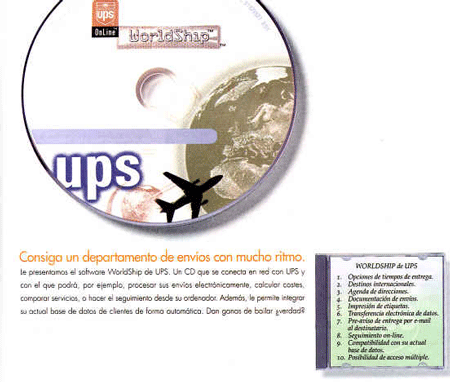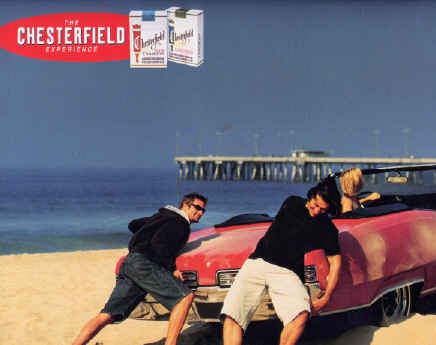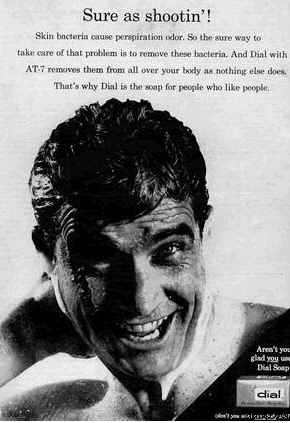The
Key Benefit
When consumers
buy a product they are interested in the benefits
that it gives them. We buy a computer not because of its components
but because of what it gives us. If we want a computer we buy it with
an aim: to sort out the accounting, to learn computing, so that our
son or daughter is successful at university, to communicate on the
Internet or simply to show that we know about these things infront
of friends.
Consumers
buy things after being guided by certain motivations.
These motivations can be rational like choosing a car that consumes
less petrol. But often they are motivations related to feelings, emotions,
social relationships and even motivations coming from the subconscious.
Some of
the reasons why consumers buy are very rational.
In this sense, part of the publicity to sell products or services
for other companies needs to be communicated by giving a series of
rational benefits which you can measure or contrast. The following
advert is a good example of a courier service which offers a series
of benefit like a discout in costs if you contract its servcices.

If you
look carefully at adverts you will notice that successful products
use emotional and non rational messages.
Young people buy products to help them feel integrated in a group,
to feel older, accepted, to do the opposite to what their parents
tell them or to try and win over the most popular guy/girl in the
class. When we try to market some youths shoes we can use rational
arguments like these shoes will last a long time and they are very
comfortable. However, some shoes have had great success selling to
youths because their message is "the shoes that your dad would
never wear".
The publcity
campaigns used by tobacco companies can focus on a rational benefit
e.g. this tobacco tastes better or it is smoother. But the majority
usually have adverts that relate to the consumption of tobaco with
an emotional or social benefit. In this sense the product is related
to freedom, friendship, fun or having social success. In the following
example, we haven't found a logical argument. We remind ourselves
that tobacco dammages our health.

It is necessary
to analyze, in a creative way, the possible benefits that our product
can give to our clients. To do this we need to follow a few steps
that allow us to decide which of our product's benefits we are going
to underline and choose one in particular as the key benefit. Therefore,
we should:
1. Analyze
the product in depth, the competition and the consumer's rational
and non rational motivations.
2.
Carry out creativity sessions, group meetings in which you focus
on clients, sales teams and employees. The clients, competing products,
sales teams and in general, all of the employees are a good source
of ideas.
3.
Generate a long list of possible rational, emotional and sociable,
benefits. Our clothes can offer the consumer comfort, you won't
get cold, they will last a long time, you will save money, maybe
make your neighbours jealous, show that you know about fashion,
help you to get a job, have social success, help you integrate into
a group, increase your self-esteem, help get the man/woman of your
dreams, as you can see there is an infinity of possible benefits.
4.
Select a few benefits that we will use in our messages. . The motives
that we choose will depend on our marketing strategy, the image
and the product positioning. The benefit should be valuable from
the consumers perspective. Also before we choose it is very important
to study the benefits that the consumer knows about the competing
products.
5.
Choose one benefit which is basic and fundamental, with which you
can base your advertising campaign.
The best
thing to do is choose a KEY BENEFIT.
Our advert will be built around this one basic benefit. To choose
this benefit what you have to do is look at it from the consumer's
perspective and the reasons why they buy. If, for example, our engineers
have created a television that turns on in two seconds instead of
four, from a technical quality point of view this is something spectacular,
if the consumers don't appreciate this we can always point it out
to them.
The key
benefit that we can choose depends on the benefits that the consumer
knows about competing products/brands. If a strong competitor is already
clearly positioned with one benefit it is probably best to choose
a different one.
For example,
let's go back to the soap advert. It is a product diferentiated from
the rest because it has the special effect of eliminating bacteria
from the skin which causes bad smells. Therefore, this is no longer
a normal soap that simply cleans, this soap also kills bacteria. We
focus on a basic motivation which is to feel socially secure, but
it also eliminates bad body odours. The basic benefit of this product
is the social benefit, it is for "people who like people"
to eliminate bad odours.

In the
following example the key benefit which is being sold is "close
50% of the skins pores".
